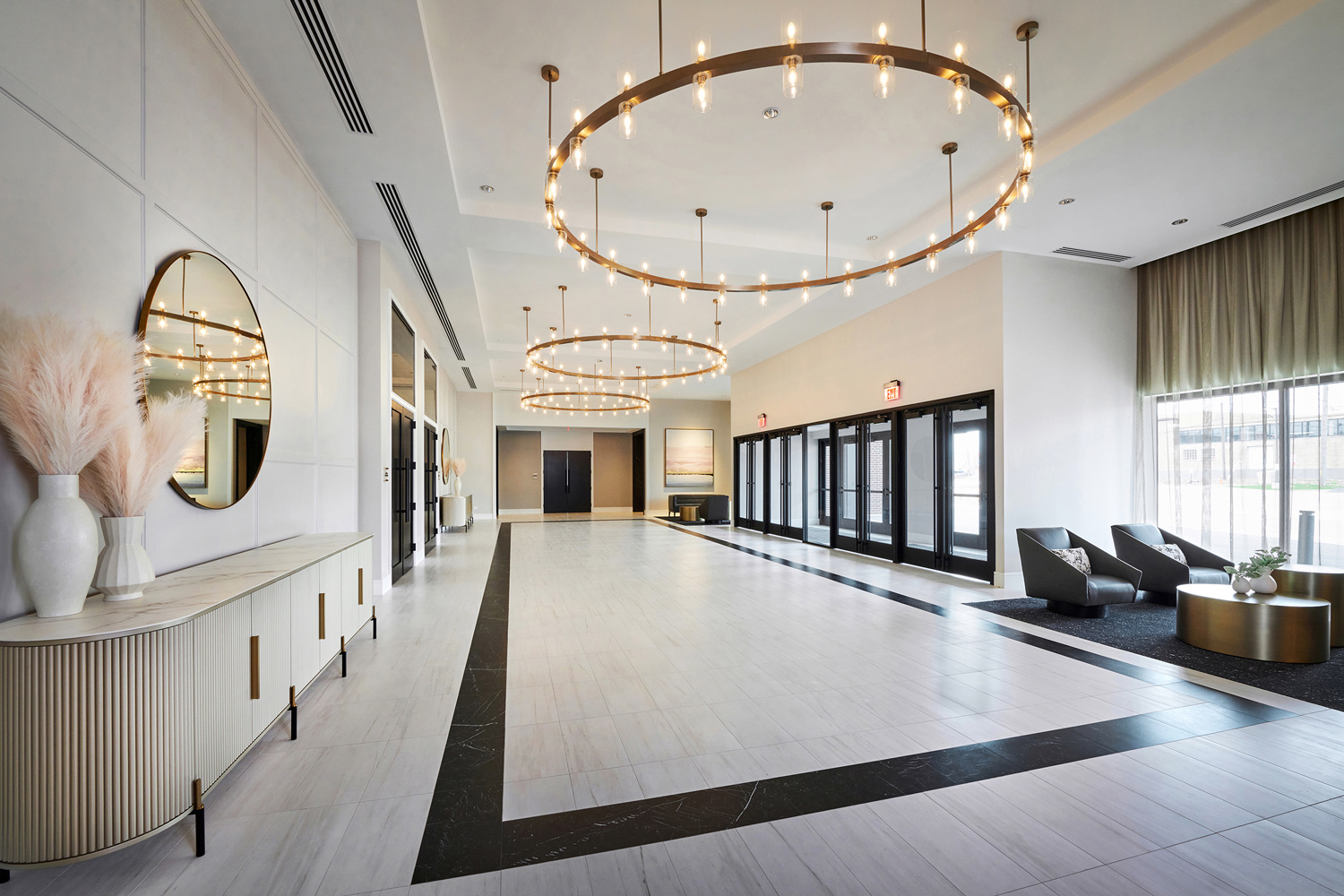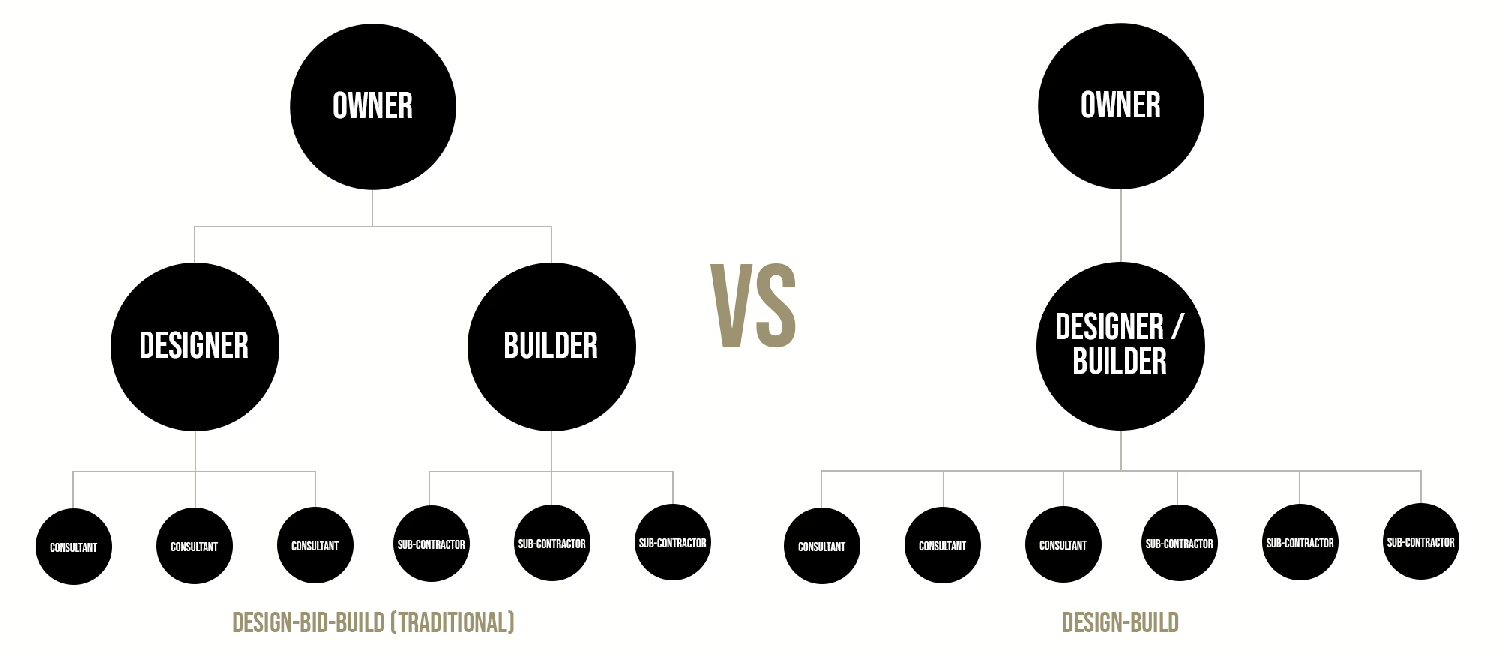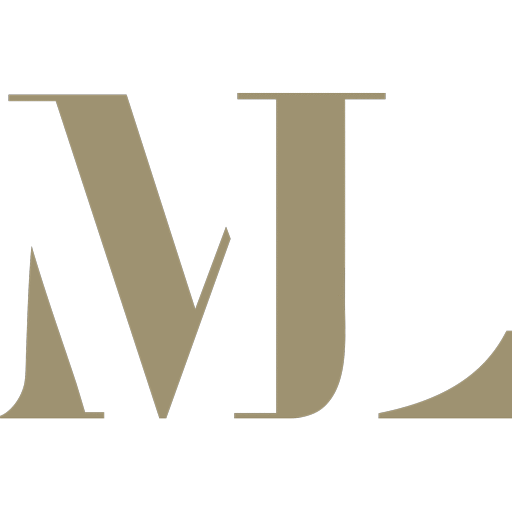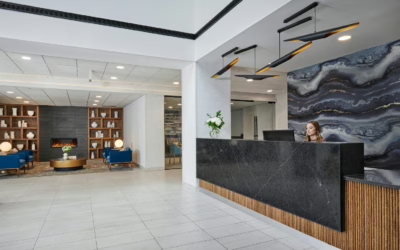Design-Build Construction 101
OVerview & Key Insights of design-Build Construction
What is Design-Build Construction?
Design-build construction is a streamlined approach to project delivery that combines design and construction services under a single contract. It differs from traditional methods, such as design-bid-build, by creating one cohesive team responsible for every project aspect, ensuring clearer accountability, improved communication, and enhanced efficiency.

Ateres Ayala was a project where the client initially hired an architect who primarily focused on the project’s design elements, which led to the project being significantly over budget. After that problem, the client then realized a design-build approach was a better solution, which resulted in a successful project delivery that was on-time and within budget.
How Does Design-Build Work?
Unlike traditional methods (design-bid-build), where owners hire architects and contractors separately, design-build integrates both functions. This means the design-build firm manages everything from initial design to project completion, significantly reducing the complexity for the owner.

The Design-Build Process in Detail
- Strategy The design-build team works closely with the owner to understand project goals, requirements, and constraints, ensuring alignment from the beginning. Depending on the project type and client, this can also be called programming or pre-design.
- Design Architects and engineers collaborate directly with construction experts, enabling efficient design solutions that balance functionality, aesthetics, and cost.
- Pricing With a unified approach, pricing and construction can begin earlier, overlapping with design phases to accelerate timelines and reduce downtime.
- Construction With seamless transitions between phases, the project moves smoothly into construction, allowing quick adjustments to unexpected issues, preserving quality and budget.

Leadership Models in Design-Build
Builder or Contractor-Led Design-Build
In contractor-led models, construction companies directly subcontract architects and designers. This structure emphasizes cost control, scheduling efficiency, and construction practicality. It is particularly common in straightforward commercial, industrial, or infrastructure projects.
Designer or Architect-Led Design-Build
Architect-led design-build features architects in primary management roles, which is ideal for specialized or aesthetically driven projects. The architects’ direct oversight ensures the project’s artistic integrity and vision alignment, commonly applied in high-end residential, cultural, and other projects where the quality of the design is the priority.
ML GROUP & Other Integrated Design-Build Firms
An increasing number of firms, such as ML Group, operate as integrated design-build organizations. This model typically provides designers with earlier and more precise insights into cost and constructability, allowing them to strategically maximize the impact of design decisions within established budgets. Concurrently, construction teams gain a deeper understanding of the designers’ intent, enhancing communication and execution. While integrated design-build firms can prioritize either aesthetics or construction costs based on project specifics, these priorities are typically driven by the client’s objectives rather than contractual leverage.
Another version of this is when designers and builders enter into a joint venture on projects where the parties typically pool their resources, expertise, and capital, sharing the risks and rewards of the venture.

Advantages of Choosing Design-Build
Enhanced Collaboration and Innovation
With a single integrated team, stakeholders collaborate closely, boosting creativity and problem-solving effectiveness. Innovative solutions naturally emerge due to the collective expertise involved.
Greater Efficiency
Design-build projects typically finish faster, about 12% quicker than traditional projects, thanks to simultaneous design and construction phases that minimize delays and streamline decision-making.
Cost Savings
By eliminating inefficiencies and overlapping activities, design-build projects often realize significant cost savings. Integrated teams prevent costly delays, streamline project timelines, and reduce overall project expenses.
Improved Risk Management
Having one responsible entity significantly reduces owner risks, simplifying problem resolution, minimizing claims, and improving overall project outcomes.
Increased Transparency and Flexibility
Clear accountability provides greater transparency and easier project oversight, allowing flexible adaptations and responsive decision-making throughout the project.
Challenges of Design-Build Compared to Design-Bid-Build (Traditional) Project Delivery
Risk Allocation
Design-Build
The design-build team assumes full responsibility for both design and construction, reducing owner risk but concentrating it on the contractor. This can lead to disputes if issues arise during execution
Design-Bid-Build
Risk is distributed among multiple parties, but owners bear more responsibility for managing changes, delays, or cost overruns.
Communication & Collaboration
Design-Build
Integrated teams foster collaboration between designers and builders, reducing miscommunication and costly change orders. However, success relies heavily on trust and teamwork within the design-build team.
Design-Bid-Build
Designers and contractors work independently, often leading to communication gaps. Contractors have no input during the design phase, which can result in inefficiencies or impractical designs that require expensive adjustments during construction.
Timeline
Design-Build
Overlapping design and construction phases compress schedules significantly, making it ideal for fast-track projects. However, accelerated timelines may increase initial costs or compromise quality if not managed carefully.
Design-Bid-Build
Sequential phases (design, bidding, construction) inherently extend project timelines. Delays in any phase can ripple through the entire process.
Budget Certainty
Design-Build
As there is no competitive bid process, design-build is not always the most affordable option. However, through the integration of the design and construction teams, owners typically have an idea of cost overruns earlier in the process, avoiding delays due to value engineering or having to find more money for projects. Further, the integrated process typically results in fewer change orders, leading to better overall cost control.
Design-Bid-Build
Budgets are defined after completing the design phase, offering greater initial cost certainty. However, it is not uncommon for designers to come in over budget, requiring a value engineering process, which can delay the project or require the clients to increase their budget. Additionally, due to the adversarial relationship between the designer and the builder, unexpected change orders during construction due to errors or omissions in construction documents can inflate costs significantly.
Exploring Alternatives to Design-Build
Design-Bid-Build (Traditional Delivery)
As mentioned above, Design-Bid-Build represents the conventional method where design and construction are managed by separate entities under distinct contracts. This approach encourages competitive bidding and clear accountability, but usually results in extended project timelines due to sequential phases. Moreover, the model places the majority of risks on the owner and can foster adversarial relationships between designers and contractors, leading to potential delays or increased litigation risks.
Progressive Design Build
Progressive Design-Build builds upon traditional design-build by offering increased flexibility during the project’s early phases. Owners actively participate in design decisions, ensuring alignment with project goals. This model is particularly advantageous for complex projects with evolving requirements. However, it typically involves a more interactive pre-construction phase due to extensive collaboration. This approach aligns closely with ML Group’s standard process, emphasizing early collaboration to effectively manage site constraints, construction phasing, and budget considerations.
Engineering, Procurement, and Construction (EPC)
EPC offers a turnkey solution where the contractor is responsible for design, procurement, and construction. It significantly reduces the owner’s risk and streamlines delivery, ideal for projects with clearly defined specifications, such as industrial or road construction. However, the EPC model can become more time-consuming and costly compared to traditional design-build due to contractor-controlled sequencing. The design quality might also suffer since contractors prioritize construction over nuanced design considerations.
Engineering, Procurement, Construction, and Management (EPCM)
EPCM is similar to EPC but grants the owner greater control by contracting separately for each aspect—design, procurement, and construction services. This model provides flexibility and enables owners to leverage specific expertise from multiple contractors. Nevertheless, increasing administrative demands require heightened owner involvement and more robust coordination.
Job Order Contracting (JOC)
JOC caters specifically to smaller-scale or recurring projects through long-term contracts. This approach significantly reduces the administrative burden associated with repetitive small projects but lacks applicability for larger, complex projects.
Multiple Award Task Order Contract (MATOC)
MATOC expands upon the JOC model by allowing multiple contractors to compete for task orders under one master contract. This method promotes competitive pricing and flexibility across diverse project needs, though it demands meticulous management to coordinate multiple contractors effectively.
Frequently Asked Questions (FAQs) About Design-Build Construction
Q: What is design-build construction?
A: Design-build is a project delivery method where one entity manages both the design and construction phases under a single contract. This integrated approach fosters collaboration, streamlines communication, and reduces the risk of delays or cost overruns compared to traditional methods like design-bid-build.
Q: How is design-build different from traditional construction methods?
A: Unlike traditional methods where design and construction are handled by separate entities, design-build unifies these processes. This results in faster project delivery, fewer change orders, and a single point of accountability for the client.
Q: Why should I choose design-build over other delivery methods?
A: Design-build offers several advantages:
- Faster project timelines due to overlapping design and construction phases.
- Cost efficiency through early collaboration between designers and builders.
- Simplified communication with one team managing the entire process.
Q: How does budgeting work in a design-build project?
A: Budgeting begins early in the process with transparent cost estimates based on your goals. Collaboration between our designers and builders ensures cost-effective solutions without compromising quality.
Q: How long does a typical design-build project take?
A: Timelines vary by project type:
- Ground-up buildings typically take 12–24 months from strategy through completion, depending on scale, scope, and various other factors. However, this can vary drastically depending on different considerations.
- Renovations are often less and typically take 6–12 months, depending on complexity, scope, etc. However, through an accelerated design-build process, we have completed some complex renovation projects, like The Archer, in less than four months.
Q: Is design-build more expensive than traditional methods?
A: Not necessarily. While upfront costs may seem higher due to early collaboration efforts, the integrated approach minimizes costly delays, change orders, and inefficiencies often seen in traditional methods.
Q: What are the challenges of renovating existing structures using the design-build method?
A: Renovations often uncover hidden issues like outdated systems or structural deficiencies. Our diverse team and extensive experience with and understanding of existing buildings allow us to identify potential problems early in the strategy or pre-design phases. Further, our integrated team efficiently addresses such challenges by adapting designs and construction plans in real time without lengthy change orders.
Q: What kind of contract is used for design-build projects?
A: While this can vary, we often use a single-source contract that clearly outlines roles, responsibilities, scope of work, budget, and timeline. This simplifies accountability and reduces administrative burden for you as the client.
Q: Are there any legal considerations unique to design-build projects?
A: Yes. Design-build contracts must clearly define risk allocation between parties since one entity oversees both design and construction. This ensures clarity on responsibilities for changes or unforeseen issues.
These FAQs provide clarity for potential clients while highlighting your firm’s expertise in delivering high-quality projects through an integrated approach.
The Archer was a project ML Group executed in less than four months through an accelerated design-build process.
Warren Barr Lieberman was a post-acute healthcare design-build project ML Group execute.
ML Group-Specific FAQs
Q: Can ML Group work with external designers or contractors?
A: Yes. While we have teams of talented and capable architecture, design, and construction experts, we recognize we’re not always the best fit for some roles within projects. So while we typically like to handle strategy, design, and construction in-house, we often collaborate with external strategists, designers, or contractors through joint ventures or other integrated delivery processes. This ensures seamless coordination and maintains the benefits of the design-build approach. Further, we know that by including partners that fill any gaps in expertise we may have for specific project types, we only further ensure a successful project and a happy client.
Q: What types of projects does ML Group specialize in?
A: While ML Group works across a variety of markets—including healthcare, multi-family housing, workplace, education, retail, and hospitality—the majority of our work involves renovation, repositioning, and adaptive reuse.
We frequently provide full design-build services, including strategic planning, design, and construction, particularly for post-acute healthcare and multi-family housing projects. We often handle both design and construction for workplace environments, and collaborate with others on any workplace strategy components of projects. We typically collaborate with outside designers in retail and hospitality, but take the lead on construction documentation and delivery. Our role in education projects varies widely, and we often partner with other architects on ground-up work while supporting design and construction in a collaborative capacity.
No matter the project type, our priority is assembling the right team to deliver the best outcome for our client.
Q: As the owner, how involved will I be in the design-build process?
A: Your involvement is crucial to the success of the project. From initial consultations to material selections and regular updates during construction, we ensure your vision is reflected throughout every phase.
More Thought Leadership
Flight to Quality in Hospitality Spaces
The Flight to Quality in Hospitality DesignDrivers Behind the Flight to Quality in Hospitality DesignSince the onset of the COVID-19 pandemic, flight to quality has moved beyond real estate jargon to become a guiding principle across multiple industries. In the...
The Flight to Quality in Post-Acute Healthcare design
The Flight to Quality in Post-Acute Healthcare DesignHow Design Is Transforming Skilled Nursing Facilities and Why Hospitality-Inspired Design Is the New Standard in Post-Acute and Skilled Nursing EnvironmentsIn the wake of the pandemic, the “flight to quality” has...
The Flight to Quality in Multifamily Housing
The Flight to Quality in Multifamily HousingRedefining Value: What Today’s Tenants Want and Tomorrow’s Assets RequireSince the onset of the pandemic, a decisive shift has been underway across nearly every corner of the real estate industry: a decisive flight to...
Contact us
Contact us to learn more about design-build or see how we might work together on future projects.
Contact

Follow
Page Contents
- 1 Design-Build Construction 101
- 1.1 OVerview & Key Insights of design-Build Construction
- 1.2 What is Design-Build Construction?
- 1.3 How Does Design-Build Work?
- 1.3.1 The Design-Build Process in Detail
- 1.3.2 Builder or Contractor-Led Design-Build
- 1.3.3 Designer or Architect-Led Design-Build
- 1.3.4 ML GROUP & Other Integrated Design-Build Firms
- 1.3.5 Enhanced Collaboration and Innovation
- 1.3.6
- 1.3.7 Greater Efficiency
- 1.3.8 Cost Savings
- 1.3.9 Improved Risk Management
- 1.3.10 Increased Transparency and Flexibility
- 1.4 Challenges of Design-Build Compared to Design-Bid-Build (Traditional) Project Delivery
- 1.5 Exploring Alternatives to Design-Build
- 1.6 Frequently Asked Questions (FAQs) About Design-Build Construction
- 1.7 ML Group-Specific FAQs
- 1.8 More Thought Leadership
- 1.9 Flight to Quality in Hospitality Spaces
- 1.10 The Flight to Quality in Post-Acute Healthcare design
- 1.11 The Flight to Quality in Multifamily Housing
- 1.12 Contact us





